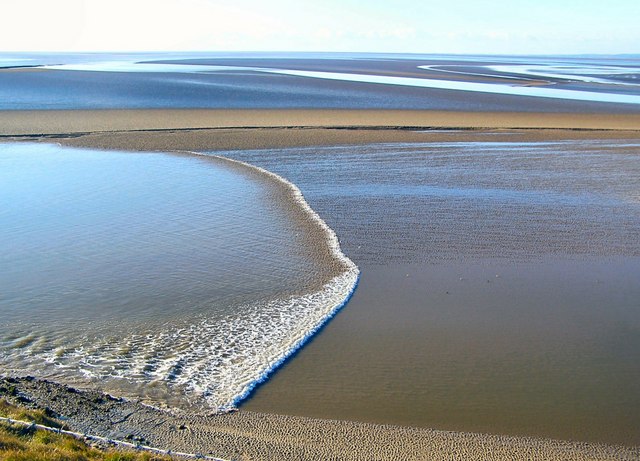Sunday, March 20, 2011
March 20, 2011 : Tidal Bore
Tidal Bore
A tidal bore (or simply bore in context, or also aegir, eagre, or eygre) is a tidal phenomenon in which the leading edge of the incoming tide forms a wave (or waves) of water that travel up a river or narrow bay against the direction of the river or bay's current. As such, it is a true tidal wave and not to be confused with a tsunami, which is a large ocean wave traveling primarily on the open ocean.
Bores occur in relatively few locations worldwide, usually in areas with a large tidal range (typically more than 6 metres (20 ft) between high and low water), and where incoming tides are funneled into a shallow, narrowing river or lake via a broad bay. The funnel-like shape not only increases the tidal range, but it can also decrease the duration of the flood tide, down to a point where the flood appears as a sudden increase in the water level. Note the tidal bore takes place during the flood tide and never during the ebb tide.
A tidal bore may take on various forms, ranging from a single breaking wavefront with a roller — somewhat like a hydraulic jump — to ‘undular bores’, comprising a smooth wavefront followed by a train of secondary waves (whelps). Large bores can be particularly very unsafe for shipping,but also present opportunities for river surfing.
Two key features of a tidal bore are the intense turbulence and turbulent mixing generated during the bore propagation, as well as its rumbling noise. The visual observations of tidal bores highlight the turbulent nature of the surging waters. The tidal bore induces a strong turbulent mixing in the estuarine zone, and the effects may be felt along considerable distances. The velocity observations indicate a rapid deceleration of the flow associated with the passage of the bore as well as large velocity fluctuations. A tidal bore creates a powerful roar that combines the sounds caused by the turbulence in the bore front and whelps, entrained air bubbles in the bore roller, sediment erosion beneath the bore front and of the banks, scouring of shoals and bars, and impacts on obstacles. The bore rumble is heard far away because its low frequencies can travel over long distances. The low-frequency sound is a characteristic feature of the advancing roller in which the air bubbles entrapped in the large-scale eddies are acoustically active and play the dominant role in the rumble sound generation.
The word bore derives through Old English from the Old Norse word bára, meaning a wave or swel
Subscribe to:
Post Comments (Atom)


No comments:
Post a Comment